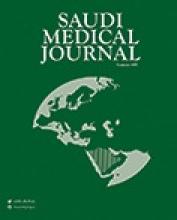To the Editor
With great interest, we have read the article by Al-Rabab’ah et al1 entitled “Awareness of Minamata convention among Jordanian dentists.” In this article, the authors assessed the knowledge of Jordanian dentists toward phase down of amalgam as recommended by the Minamata Convention and their training and competency in placing posterior composites. Over the past several years, we have also shown that when dental amalgam fillings are exposed to electromagnetic fields (EMFs) produced by magnetic resonance imaging (MRI) or those generated by other sources such as mobile phones, the level of mercury release from dental amalgam restorations can be significantly increased.2,3 Microleakage studies have further confirmed the findings obtained in our studies on EMF-induced accelerated mercury release.4 Furthermore, Kursun et al5 have also demonstrated that exposure to x-rays (an energetic part of the electromagnetic radiation spectrum) can increase the mercury release from amalgam fillings. Based on the substantial evidence provided, a shortcoming of the article authored by AL-Rabab’ah et al comes from this point that these researchers have not considered the well-documented issue of the increased release of mercury from dental amalgam restorations following exposure to EMFs that can play a major role in phase down in the use of dental amalgams. It is worth noting that human exposure to electromagnetic fields have exponentially been increased over the past decades; hence, the importance of EMF-induced increased mercury release from dental amalgam fillings is getting more global attention.
Reply from the Author
We congratulate Dr. Maryam Paknahad‘s team on their insightful study regarding the effect of EMF on increased release of mercury from dental amalgam. Jordan has singed the Minamata convention among 140 countries in October 2013. Jordan later ratified the convention in 2016. Minamata convention is considered as a legally binding document for its signatories. The issue of amalgam phase down in Jordan, and other signatories, has moved now from a debatable domain into a legislative domain. The Jordanian Ministry of Health has already issued directives concerned solely with the control of amalgam use and strategies for amalgam waste management. Based on the results of our study we had already proposed a “paradigm shift” in teaching direct restorations for our undergraduate students at the University of Jordan to follow a “minimally invasive approach”. Our article aimed mainly to discern the degree of awareness on the Minamata convention and its implication on dentistry among Jordanian dentists. As evident from the result of our paper, an urgent need for raising the awareness among Jordanian dentists and the lay public is eminent. Debating the hazardous potential of amalgam and routs of such hazard were outside the scope of our article and it would be exhaustive to discuss all published research in that matter.
Mohammad AL-Rabab’ah
Department of Conservative Dentistry, Faculty of Dentistry, University of Jordan, Amman, Jordan
- Copyright: © Saudi Medical Journal
This is an open-access article distributed under the terms of the Creative Commons Attribution-Noncommercial-Share Alike 3.0 Unported, which permits unrestricted use, distribution, and reproduction in any medium, provided the original work is properly cited.






